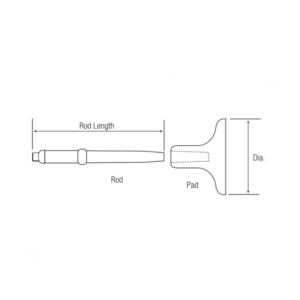The ballast bed supporting the railway structures requires maintenance ensuring a perfect evacuation of rainwater in the platform. In addition, the ballast must retain its shape characteristics, namely its sharp edges and interstices, in order to fulfill its role. Eventually, the old blunted ballast needs to be renewed and replaced with a new layer of sharp-edged material. For the ballast cleaning this is the best deal that you will have to deal with now.
The extraction of the ballast between sleepers most often requires manual work, because of the small size of the site. Because of its speed, the excavator-suction is in this case an advantageous alternative, because it does not require expensive labor. Under the effect of the powerful depression, the ballast is sucked up quickly and easily, even in the narrowest intervals. The material is then stored temporarily, before being cleaned or evacuated.

Cleaning the railway ballast
Transport companies such as railway companies attach great importance to the cleanliness of railway stations and stations as well as the tracks themselves. Waste thrown away by careless travelers, such as newspapers, goblets, cigarettes, etc., are not only objects unsightly to the eye, but may represent a real danger in adverse circumstances. On the other hand, the particles resulting from the periodic grinding of the tread of the rails must be eliminated on the tracks built on concrete slabs.
The use of a vacuum excavator, in combination with the rail-road technology, allows quick and profitable cleaning of the sections concerned. Over the years, due to the effects of traffic and climatic influences, the ballast loses its shape and therefore significant structural properties of its own. Therefore, it must be renewed or replaced after 15 to 30 years. Excavations resulting from the renewal, transformation or dismantling of tracks are also often contaminated by pollutants specific to the railway sector.
Features of the device
The two machines each have an excavation device, a measuring and guidance system and a sieving device to ensure uniform ballasting and efficient transport of the cuttings. Ballast that cannot be reused is evacuated using an MFS wagon material conveyor and silo.
The global and highly efficient renewal of the switchgear is carried out with the new W + excavation machine and the REINER + ballast screen. Excavation, cleaning, laying and compaction are done in a continuous process. These machines achieve extremely high performance and significantly reduce downtime.
The Wieger Ballast Screening Machine ensures fast and efficient renewal, especially in small spaces near passenger, freight and handling stations. When combined with a used ballast transport wagon (AVES), the unit provides particularly fast loading and transfer of used ballast.
This process is not only much faster, it also requires less space, less staff and is significantly less expensive. Indeed, thanks to this process, it is possible to give up the usual ramps and temporary lanes previously required for on and off.
Long neglected, the treatment of ballast water has just become mandatory, creating a market in which newcomers are positioned alongside marine solution providers. In this market, the ability to intervene on a global scale is as important as the excellence of the technologies, often derived from the treatment of water on land.

